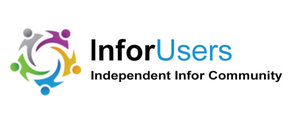The Problem: The Pandemic Highlighted the Limited Resource Issue for Providers
The COVID-19 pandemic exposed the US healthcare system’s ability to meet patients' acute care demands with limited or full bed capacities at many provider facilities. Technologies such as telemedicine/telehealth and remote patient monitoring were quickly adopted to expand the ability of providers to safely deliver patient care in the home environment. This new care delivery process provided infection protection for both the patients and the providers, while enabling the providers' services to be more widely distributed as required by their patient population. Not only did the new care-at-home delivery models improve the elasticity of the provider organization for delivering services, but they were also met with high levels of patient satisfaction.
A key challenge for many provider organizations in adopting higher levels of services for acute care at home is their current portfolio of fixed assets that include their care delivery facilities (e.g., hospitals, clinics, and skilled nursing centers). How will CFOs minimize their financial expense risk that has been established over several years of acquisitions and mergers? Can clinics be converted into telemedicine/telehealth service centers? Can current hospital floors/wards be converted into outpatient same-day service environments? Some providers are now charging "access" fees to patient service bills for using clinic/outpatient facilities or telehealth services. This approach will not likely be successful as patients will not accept this egregious practice and will drive state legislatures to regulate this practice.
The Solution:
Several progressive healthcare provider organizations are banding together to create an advocacy group that aims to extend and expand the existing federal hospital-at-home waivers and create an advanced care at-home delivery model at the Center for Medicare & Medicaid Innovation. Founded by Rochester, Minnesota-based Mayo Clinic, Oakland, California-based Kaiser Permanente, and Boston-based Medically Home, the Advanced Care at Home Coalition will also advocate for the creation of an advanced care-at-home delivery model. The coalition will use a combination of advocacy, education, and data collection and sharing to extend and expand the existing acute care-at-home waivers to help drive higher utilization of this care delivery model.
Other provider organizations that are participating in the advocacy group are Adventist Health, ChristianaCare, Geisinger Health System, Integris, Johns Hopkins Medicine, Michigan Medicine, Novant Health, ProMedica, Sharp Rees-Stealy Medical Group, UNC Health, and UnityPoint Health. These providers are highly respected organizations that will likely drive the adoption and success of this care delivery model to sustainable levels. Over time, the hospital-at-home care delivery model may become the predominant healthcare delivery model in the US.
Mayo and Kaiser Permanente have already provided significant investments into Medically Home Group, whose platform they use to support and manage the hospital-at-home care delivery services. It is likely that existing enterprise EHR vendors will develop their platforms to accommodate these services as well. Key factors to success for these hospital-at-home care platforms will be the ability to effectively integrate with the EHR, patient portal, and remote patient monitoring environments.
The Justification: Hospital-at-Home Capabilities Will Impact Provider Viability Long Term
Healthcare provider organizations that fail to integrate hospital-at-home services into their offerings will be challenged to remain viable in competitive markets. Technology companies such as Amazon, Google, and Microsoft are extending their healthcare services to include hospital-at-home solutions with little effort but will need to establish relationships with hospitals for patients that become sicker and need a higher level of hospital services.
At this time, the leadership provided by the founding members of the Advanced Care at Home Coalition will likely keep provider organizations in a competitive position to fend off the larger technology vendors. But it will be interesting to see whether the technology vendors join this coalition. If so, the market will become very interesting.
The Players: Emerging Solutions Focused on Acute at-Home Care
Representative emerging solutions focused on supporting hospital-at-home or acute care at-home services include the following:
- Medically Home: a member of the Advanced Care at Home Coalition.
- Trapollo: cloud-based at-home care solution focused on remote patient monitoring.
- Current Health: promotes care cost reductions realized with their product.
- DispatchHealth: a provider of urgent care to patients in their homes.
Success Factors:
- Providers should conduct a postmortem on their remote care services that were rendered during the pandemic to determine successful and failed ventures.
- An assessment should also include what clinical systems can be used or extended for use to support acute care at-home services.
- The identification of needed additional care support systems should also review the ability of these systems to integrate with EHR, population health, and patient portal environments using FHIR APIs. The ability to integrate RPM solutions will also be critical.
Summary:
Acute care at-home delivery services emerged out of necessity during the pandemic. Once deployed, the cost, effectiveness, and patient satisfaction of these services was quickly realized. While many provider organizations would love to see these services decline or disappear to better support their facility usage and justification, these services are more likely to increase due to patient demand. Progressive provider organizations represented by the Advanced Care at Home Coalition recognize these remote care services as a next generation level of providing safe, effective healthcare. Advancing technologies (e.g., cloud, voice, AI, and RPM), many of which are developed by large technical companies, will enable safe, and reliable care services to be delivered in the home. This emerging market opportunity is driving new vendor solutions and is enticing the large technology companies to develop solutions and services to drive higher levels of competition. Healthcare is entering a new era of service capabilities supported by emerging technologies and high levels of connected communications that will force providers to re-engineer care delivery that will support the Quadruple Aim.


